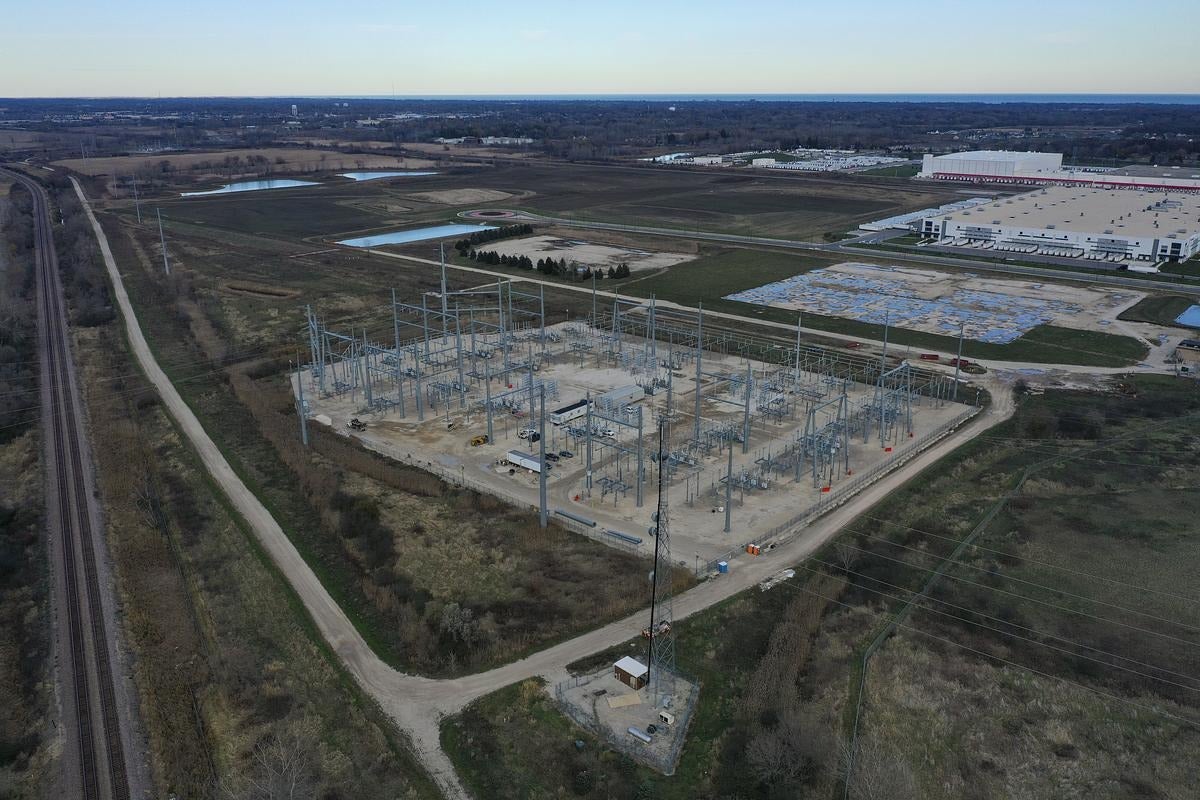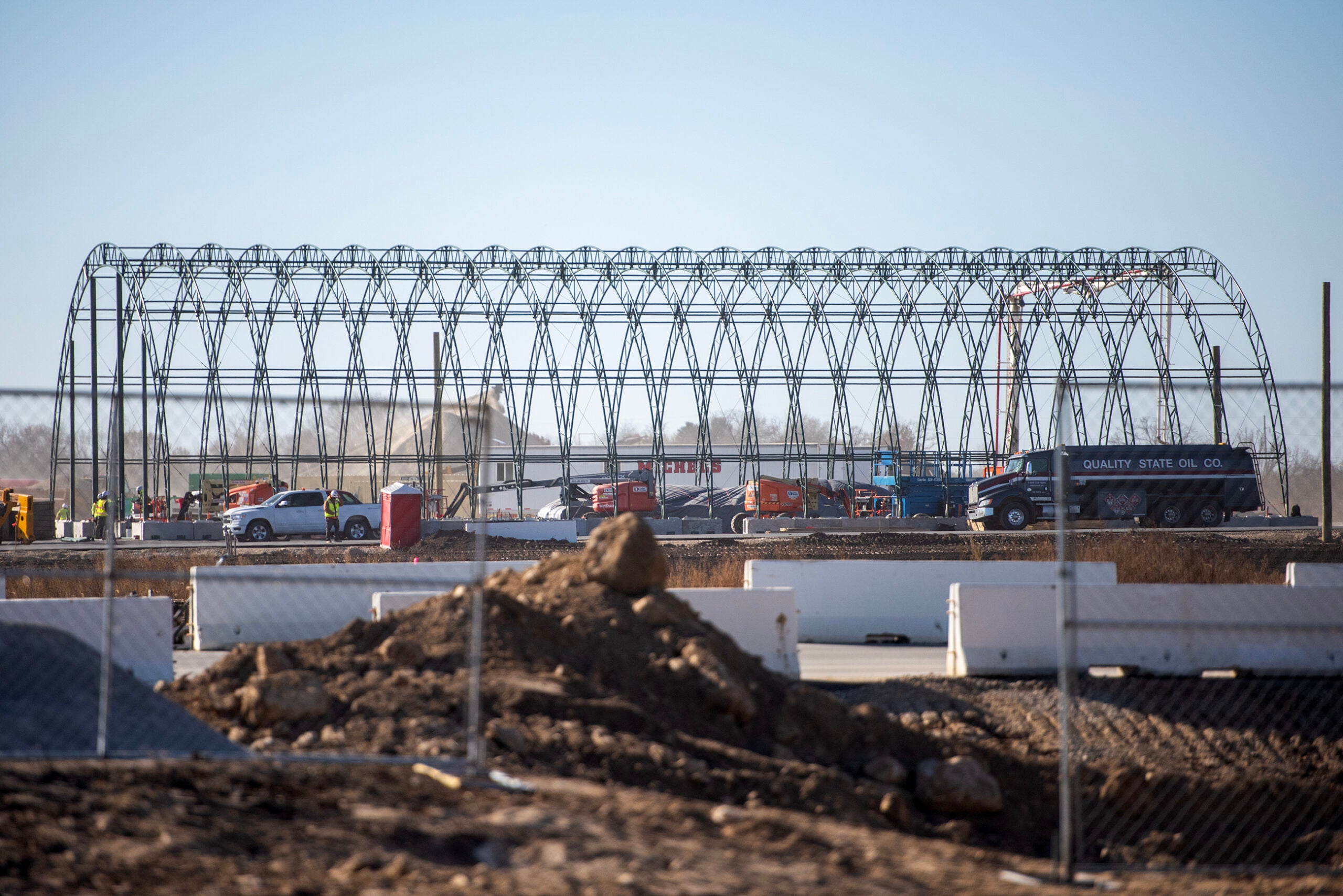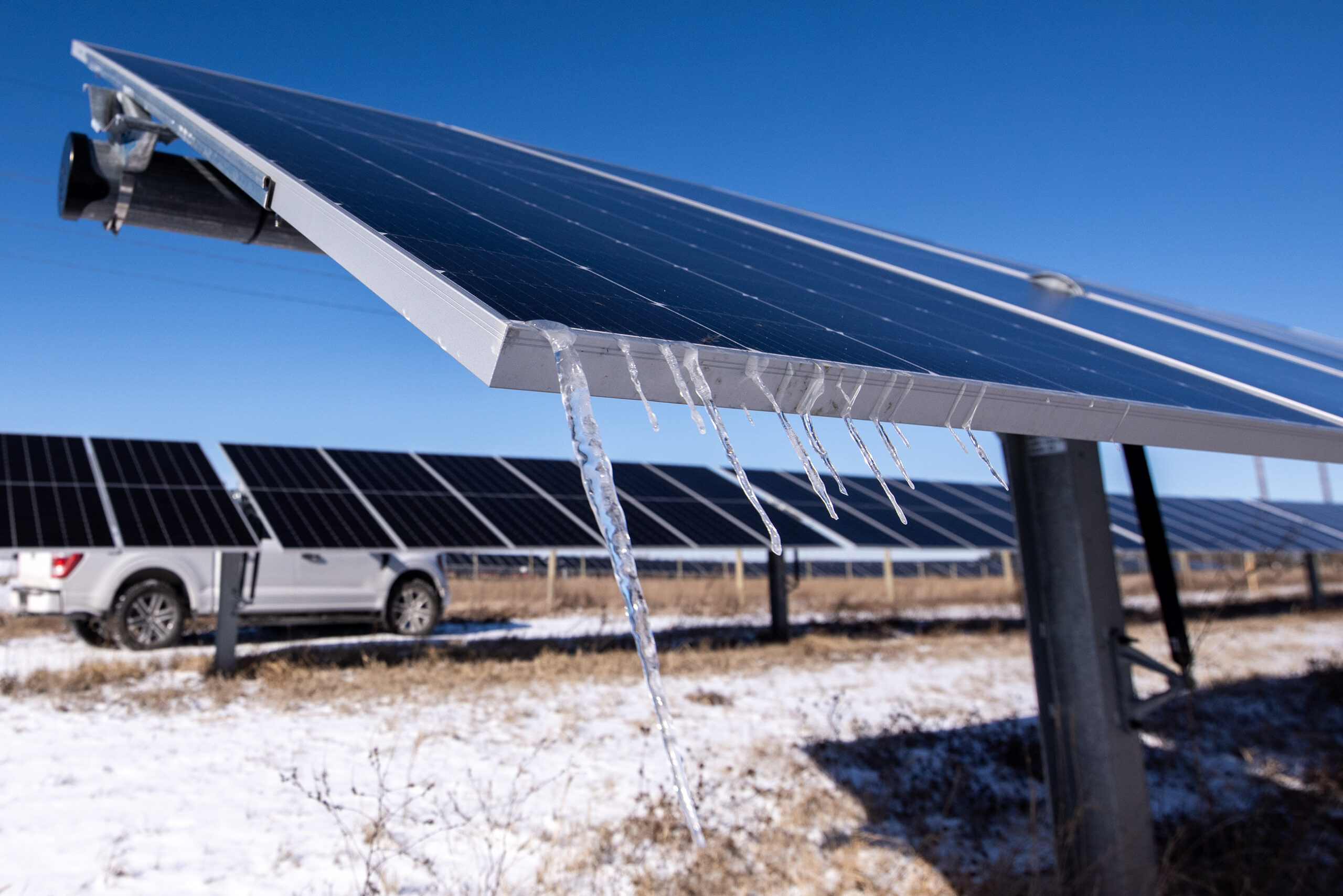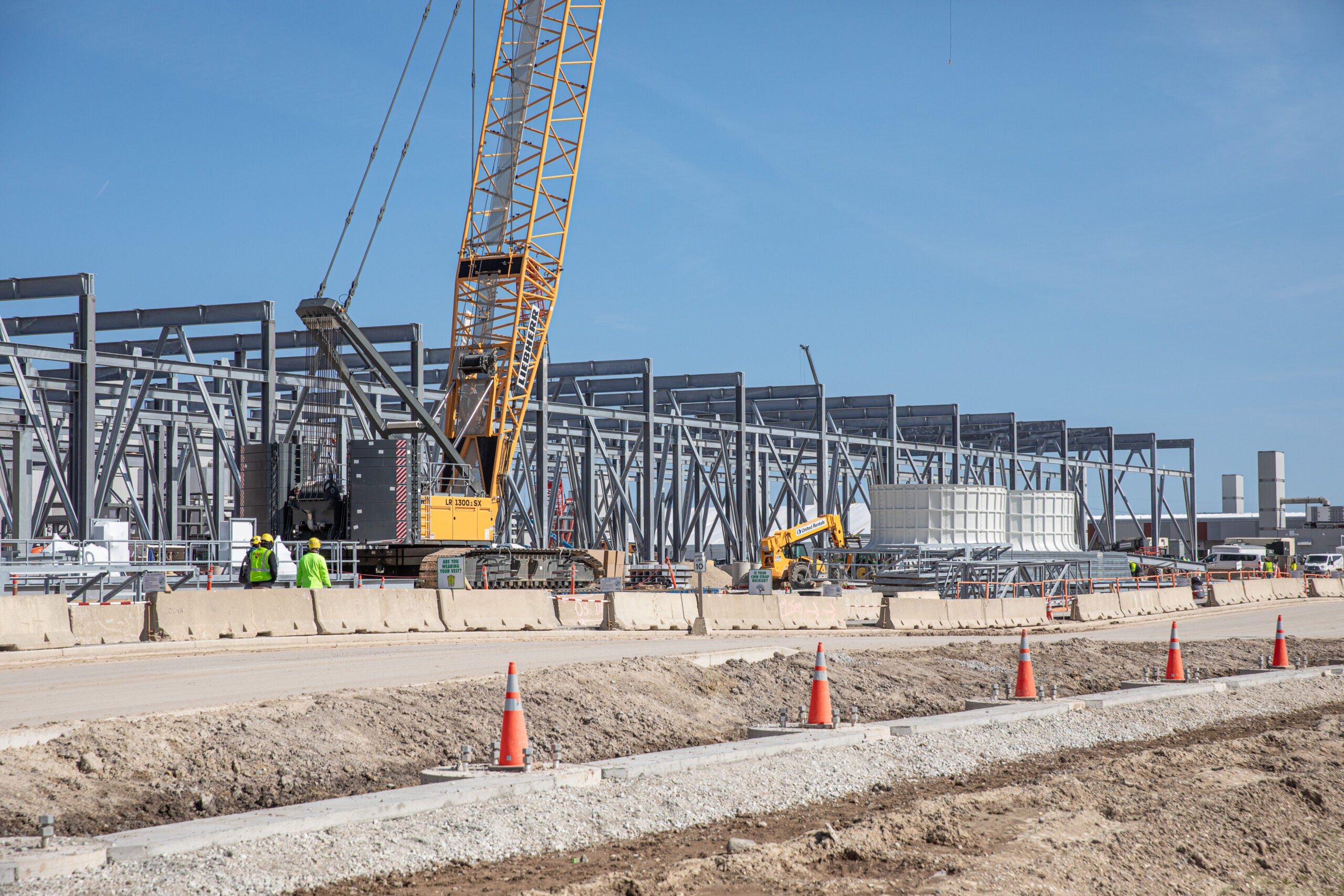As work continues on Microsoft’s data center campus in Mount Pleasant, similar developments nationally have sparked concerns about strain on the country’s electric grid.
But it’s unclear how much stress data centers will put on Wisconsin’s electric grid and what the impact of these projects will be on the state’s clean energy transition.
According to the U.S. Department of Energy, data centers are “energy intensive” buildings, using 10 to 50 times the energy per floor space of a typical commercial office building.
News with a little more humanity
WPR’s “Wisconsin Today” newsletter keeps you connected to the state you love without feeling overwhelmed. No paywall. No agenda. No corporate filter.
This year, the amount of electricity needed to power America’s data centers is expected to climb to nearly 21 gigawatts, up from 19 gigawatts in 2023, according to a new report from the Federal Energy Regulatory Commission. By the end of the decade, the country’s data centers are expected to require 35 gigawatts. For context, 1 gigawatt provides enough energy to power 100 million LED light bulbs.
Data center growth poses capacity concerns in some states
The share of the country’s energy consumed by data centers is also expected to increase. By 2030, they could consume up to 9 percent of all U.S. electricity generation, more than double their current consumption, according to a new report from the Electric Power Research Institute, or EPRI.
Federal Energy Regulatory Commission chair Willie Phillips told reporters last month the country’s grid is being tested “in ways that we’ve never seen before” due to rising demand from data centers, artificial intelligence, electrification and industrial manufacturing expansion.
He pointed to challenges in Georgia, one of 15 states that accounted for an estimated 80 percent of the national data center load in 2023. EPRI estimates that data centers consumed 4.26 percent of Georgia’s energy last year.
“Georgia just completed a new nuclear facility — units one and two of a nuclear facility — 2,400 megawatts of clean 24/7 energy for the people of Georgia,” Phillips said. “But the Georgia Public Service Commission just recently announced that they’re going to need an additional 1.4 gigawatts of generation in the near term.”
The strain on Wisconsin’s energy grid from data centers is expected to be smaller than in Georgia, where nearly 10 percent of its power could be consumed by data centers by 2030, according to EPRI’s report.
Data centers used 0.21 percent of Wisconsin’s electricity last year, according to the report. Under the report’s most high-growth projections, that number is estimated to hit 0.53 percent by 2030.
David Porter, vice president of electrification and sustainable energy strategy at EPRI, said half a percentage seems small when compared to high-growth states that could see more than 20 percent of their energy generation go toward data centers.
“It’s all relative, and the data center site selection process has a lot to do with how this plays out,” he said. “We may all be surprised. You never know where they’re gonna go, or what may change in their plans and why they decide to locate in certain places.”
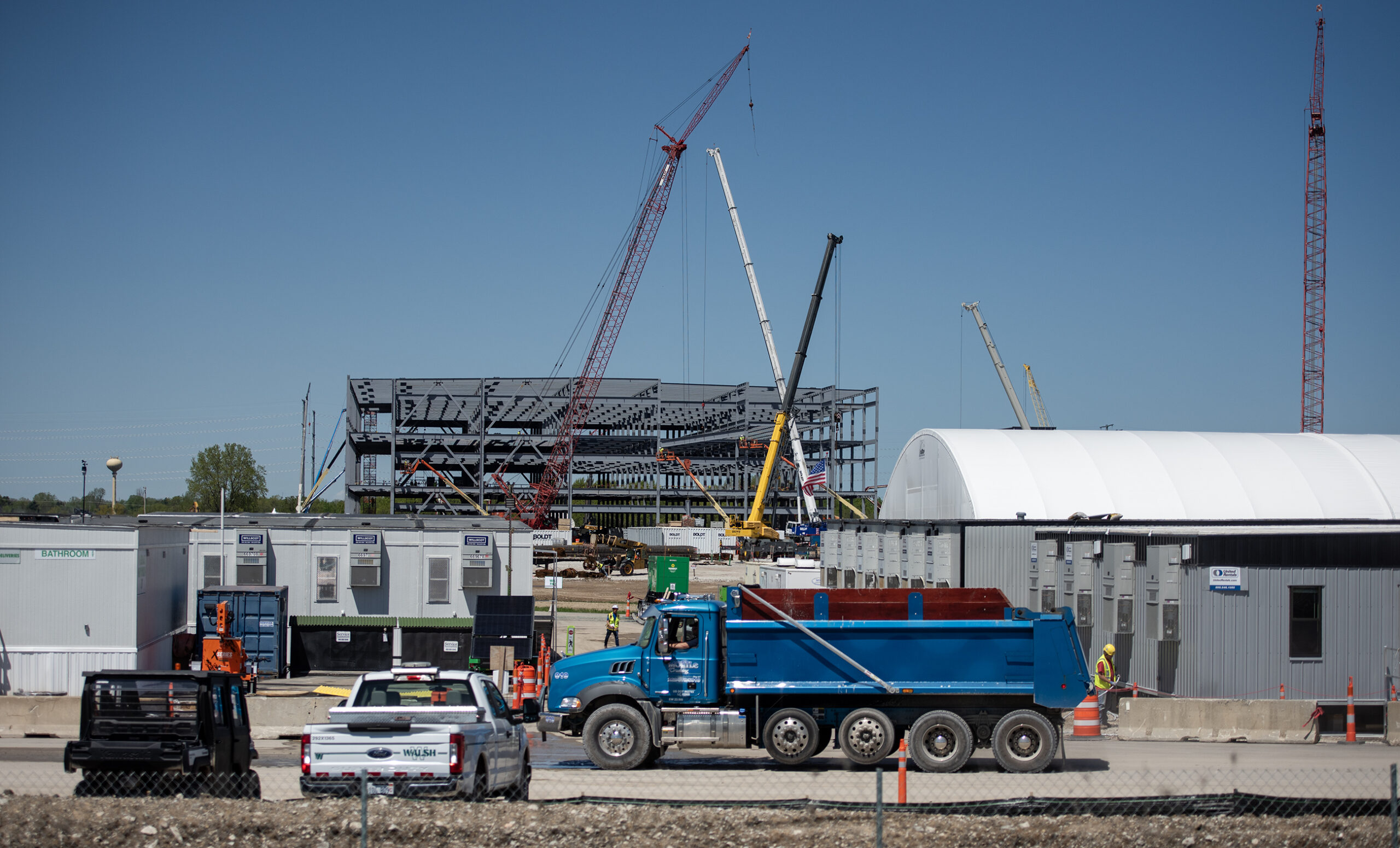
Microsoft ‘committed to paying its own way’ for power infrastructure
It’s unknown — even to state utility regulators — how much power Microsoft’s $3 billion data center campus in southeast Wisconsin will need.
At an event in Milwaukee last week, Ryan Harkins, Microsoft’s senior director of public policy, spoke about the energy needs in Mount Pleasant, saying, “These facilities require a lot of power.”
Harkins said the company hopes to move forward with the project in a way that benefits local stakeholders without unnecessarily taxing the state’s electric grid.
“To do so in a way that will meet our sustainability goals, and the sustainability goals of the particular community, can be a challenge,” he said. “But those are challenges that we’re committed to meeting in partnership with other stakeholders on the ground.”
The Public Service Commission of Wisconsin recently approved allowing We Energies to finance $300 million for a distribution project in Mount Pleasant. That’s about triple the cost of the project when the utility first revealed it to regulators.
Delanie Breuer, writing on behalf of Microsoft, said in PSC documents the company is “committed to paying its own way for assets built to serve its datacenter campus, including the costs of the Distribution Project.”
Dan Krueger, executive vice president for infrastructure and generation planning at We Energies’ parent company, WEC Energy Group, said the utility and Microsoft are still “working through the mechanics” of how that would work. He said both sides have been working closely to ensure Microsoft has the power it needs in Mount Pleasant.
“Having seen many of these developments over the years, customers in Wisconsin can rest assured that Microsoft is here for their benefit,” Krueger said.
In a filing with the DNR last year, Microsoft also revealed that American Transmission Co. and We Energies would build a new electrical substation sized to support at least 752 megawatts of power.
We Energies officials said they were not legally allowed to share estimates of how much power Microsoft’s Mount Pleasant development would need. But they did say the data center campus, as well as other industrial projects in southeast Wisconsin, did contribute to plans to convert its South Oak Creek coal plant to natural gas.
“We do sometimes get asked, ‘Why can’t you just build all renewables?’ And it goes back to this notion that we have to be reliable every day of every season,” said Krueger with We Energies.
He said natural gas investments are key to the clean energy transition because natural gas plants can respond “very quickly” to spikes in demand at times when the sun isn’t shining and the wind isn’t blowing.
Clean energy, consumer advocates weigh in
Investments in natural gas have faced scrutiny from state environmental groups, and consumer advocates have raised concerns that utilities may “over build” in response to increased demand from data centers.
In some states, the boom in data center development has slowed the clean energy transition. At Microsoft, the expansion of artificial intelligence and data centers has grown the company’s carbon footprint despite the company’s goal of becoming “carbon negative.”
Krueger said We Energies remains committed to having net-zero emissions by 2050, but acknowledged clean energy goals were set prior to the load growth from local manufacturers and Microsoft’s data center campus.
“It is a topic that we talk about with new customers entering the territory, and we do discuss how this will drive the need for more zero carbon generation to match up to that load,” he said. “We’re working through those plans now. I think we’ll know more in the coming months.”
Amy Barrilleaux, communications director for Clean Wisconsin, said via email that utilities are incentivized to build because they profit off of new generation coming online.
She said data centers are just another energy user, and utilities and regulators must meet the need in the most cost-effective and cleanest way possible.
“The easy and profitable reaction is to build a new plant, but it doesn’t have to be that way,” Barrilleaux said. “Solar and wind are cost competitive with gas. Paired with battery storage, these are viable energy solutions.”
Tom Content, executive director of the Citizens Utility Board of Wisconsin, said his organization is concerned that utilities may take advantage of fears around the capacity needed to meet demand from data centers by building more resources than they need.
He said the state needs more transparency around building projects to ensure ratepayers aren’t on the hook for those investments after they come offline. He pointed to a long-term planning process, known as integrated resource planning, as a tool that could help.
“In some ways, Wisconsin is like a sailboat without a rudder,” Content said. “We don’t have a planning process that most states have that would help provide that full analysis, the full vetting of all the drivers and looking at our energy future and how best to meet reliability in the years ahead.”
Editor’s note: The Citizens Utility Board of Wisconsin and American Transmission Co. are sponsors of Wisconsin Public Radio.
Wisconsin Public Radio, © Copyright 2025, Board of Regents of the University of Wisconsin System and Wisconsin Educational Communications Board.



